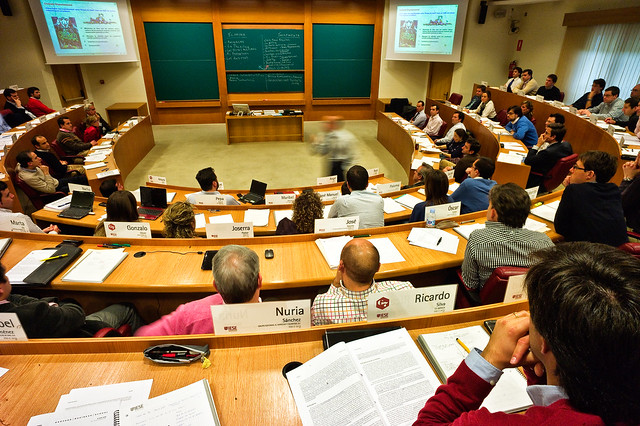Education in Spain

Education in Spain is important to the country’s future. Although the literacy rate in Spain among male and female youth has been extremely high for many years, the country has been devastated by a financial crisis and a depleting economy. In Spain, the literacy rate for youth ages 15 to 24 is excellent. The U.N.’s Children’s Fund (UNICEF) reported that an estimated 99.5% of males and an estimated 99.7% of women were literate from 2008 to 2012. These numbers are very promising but Spain’s ongoing financial crisis might make these statistics a thing of the past.
The European Union (EU) mandated spending cuts that required Spain’s “education spending [which] amounted to 4.4 percent of gross domestic product in 2014… [must now] fall below 4 percent in 2015.” The reductions in public funding also increased university tuition, cut student scholarships, increased class sizes and cut teacher salaries. In the previous year alone, Spain experienced education cuts of $2.2 billion. Consequently, there was an estimated decrease in student enrollment by 45,000 students.
In order to make the system of education in Spain more appealing and beneficial for students, José Ignacio Wert, Spain’s minister of Education, implemented new legislation called the Organic Law for the Improvement of Educational Quality (LOMCE). This piece of legislation made numerous changes to Spain’s educational system and warranted mixed feelings between the people of Spain.
One of LOMCE’s initiatives was to end a practice called Selectividad, an entry-level exam that incoming international students were required to pass before being accepted. Another initiative reduced the amount of undergraduate schooling from four years to three and increased the Master’s School requirement from one year to two. Wert said this was a significant change because Spain is “currently isolated from the rest of Europe. We currently don’t recognize graduates from other countries with a three-year degree, even if they come from Cambridge.”
Education in Spain
Wert believes that by implementing LOMCE, Spanish families will save $168 million altogether and students will be eligible to enter the job market by age 21. This is where the LOMCE education bill has created mixed feelings throughout the country because many students have a very different perspective on the matter. The LOMCE education bill was ratified in 2013 and that has decided the future of many students.
For one, students believed that by cutting undergraduate education by one whole year, they were losing the quality of education they could have experienced. Additionally, students believed Wert increased the Master’s School requirement by a full year in order for students to shell out more money to obtain their degrees.
The newly ratified bill for education in Spain is also basing the future of every student off of the examination score they receive on standardized tests. The recorded scores will determine what regions of Spain receive the most educational funding and what students are allowed to continue their education. The students that fall below the minimum requirement “will be separated and their vocational training determined for them.”
Wert stands by the LOMCE education bill because he believes it will help bring Spain’s educational system up to par with the other European countries. The only problem is, Spain’s history of civil war and fascist dictatorship sets it apart from other European countries.
The reign of General Francisco Franco left a gigantic scar throughout Spain and makes its citizens wary of any laws passed down by the national government. Wert and the people of Spain have to find a solution that will provide all aspiring students with the opportunity to pursue an education, without cutting university funding, scholarships and teachers’ wages.
– Terry J. Halloran
Photo: Flickr
